
8 Simple Actions You Can Take to Keep Your Bird Healthy
Last Updated on by Mitch Rezman
1 – Weigh your bird
Birds are prey animals. Evolution has taught them that if they look weak they are more subject to an attack by a predator in the wild. Thus it is not uncommon to see a bird appear to be healthy one day then fall over dead the next because there are no visual symptoms like you can see with a cat or dog.
One of the most precise tools you can obtain for a mere $19 is our best bird scale ever which can be used to weigh birds from budgies to large macaws.
When you weigh your bird regularly at least twice a month you can easily see large swings in weight gain or loss possibly indicating an illness without being visible by looking at the bird.
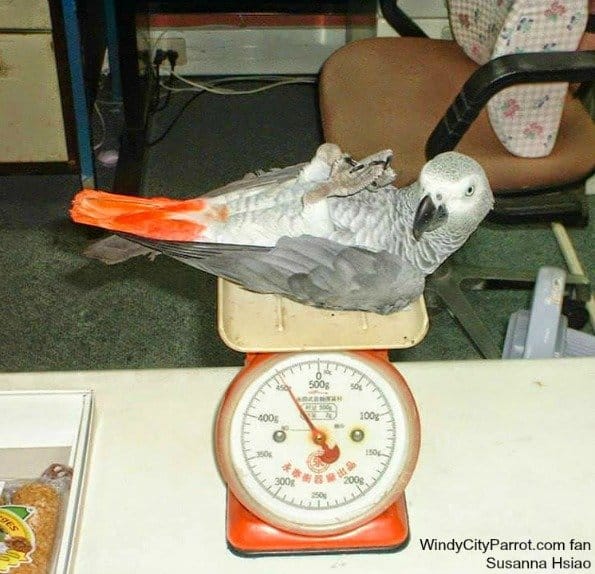
Peaches came to us at 108 g she should be close to 120 g (male Senegal parrots should be 130 g 140 g) in addition to her regular diet of Higgins Safflower Gold or Hagen Tropimix I give her lots of fresh walnuts, (I crack them open for her) unshelled almonds and sunflower seeds.
Yes, there are those that say “my vet said that’s too fatty for my bird” which it is when your bird’s wings are clipped and it resides in a cage much of its life.
Peaches has yet to fly because her wings have not grown out fully but I make her walk up a ladder several times a day and she usually even goes to the top of her cage and I then take her down again and repeat it. I’m trying to get her to walk down the ladder which she won’t do, although she climbs down the ladder on her playstand. I am employing clicker training to motivate this new activity until she is fully flighted.
Find out what your bird’s weight should be here
2 – Toweling/Restraint
This baffles me – I see the same issue with cat People, they can’t get their cat into a carrier to go to the vet.
It’s so important to practice toweling and restraining your bird because there will be a time in the birds long life that it will need to be restrained for medical treatment or even grooming.
Heck, it took me 65 years to sprain an ankle. A while back I made a video using Popcorn are cockatiel to show what I called the Zombie Death Grip. This is the proper way to restrain a bird taught to me by an avian veterinarian.
As soon as I posted the video on YouTube you would think that I was drowning puppies. How dare I this and you’re an idiot that.
I recently posted a “softer” video on bird restraint produced by:
Susan Orosz PhD DVM Diplomat American Board of Veterinary Practitioners (Avian) European College of Zoological Medicine (Avian).
Once again if you read the thread in the video below some comments are mind-numbing
“someone needs to give that woman a dose of reality!!!! what a load of crap”
Again we provide an answer to solve a problem and what does this cage bird keeper say about that”
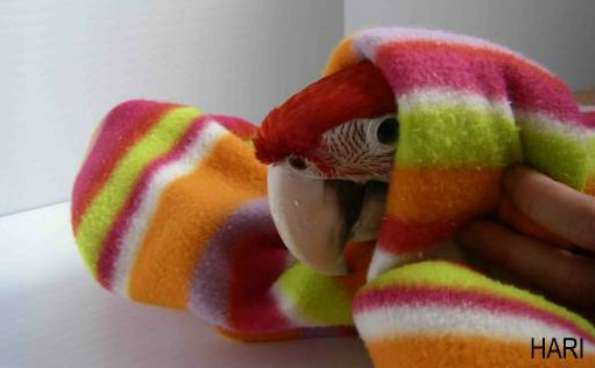
“Lol oh my god. I was just going to say that about my albino tiel Snowy!!! She HATES being restrained oh my god. She bites so hard you almost need stitches. The other two tiels that I had were pieces of cake. But Snowy is blind now. So she’s even more stressed 😢😢😢”
I hope the majority of you who are not aware of this very helpful practice will realize that once you learn it and rehearse, you can literally avoid getting bit while handling your bird.
If you notice in the video they use towels and have four different sized towels laid out on a medical tray in a veterinarian’s office.
In another Facebook group thread, I’m reading about biting birds and how they hold up a towel and use the towel to threaten the bird not to bite and get back in the cage.
Naturally, I asked what their plan was for a medical emergency. Of course, no one bothered to respond. Enjoy the video.
3 – Examine its feet
Birds are on their feet 24/7 unless they are in flight. Even those of us who have flighted birds, flight time is minimal and usually seconds at best.
If you need a refresher course on how birds feet work you can read this. They literally clamp down like a vice grip which enables them to sleep on one foot. The problem is while they are up there sleeping on the wrong surface (wrong perch) they are gently moving throughout their sleep cycle meaning a potentially rough surface (grooming perch) or a knot on a wooden perch could be grinding into the bottom of their feet.
One of the reasons birds can land on prickly bushes and barbed wire is they don’t have a lot of nerves in their feet so they may not even be aware of an impending injury.
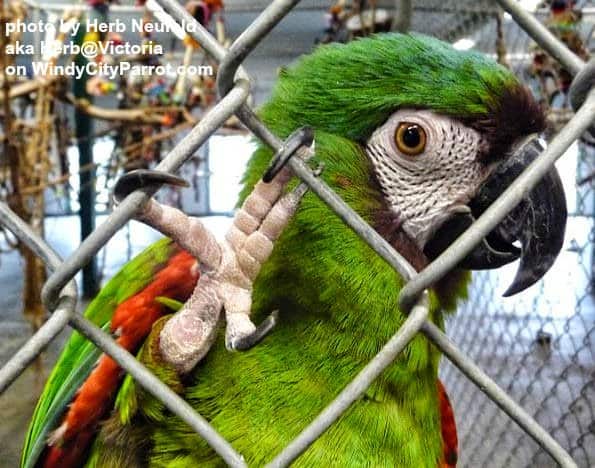
An examination is easily done once you know how to towel your bird. You can then flip the bird over on its back. It is usually easier to have a second person help you to spread its feet apart and just look at the bottom of the feet for any sores or cracks. By the way, we find this to be a feather plucking trigger. The bird is just reacting to pain not knowing where it’s coming from. Also, check for swollen joints and toes.
4. – Check your birds poop
By looking at your bird’s poop you can learn about your bird’s health. Bird poop has three parts
- Feces which is normally green and brown and for lack of a better term tubular in shape.
- Urates are the creamy white stuff that kinda looks like toothpaste
- Urine which is clear and watery.
You want to look for changes, undigested food, blood and even things like parasites. Other microorganisms can be found using something called wet mount evaluation, flotation, Gram stain, and cytology.
5 – Sexing
We talk about this a lot. It’s important to know what your bird’s sex is. About 20% of parrots are dimorphic meaning you can tell the sex by the color. Green Eclectus parrots are boys, red Eclectus parrots are girls as an example.
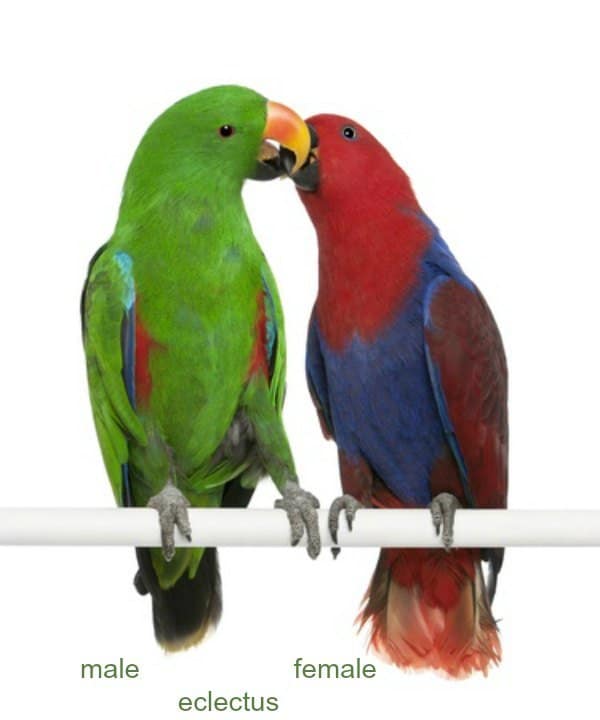
Because your bird is not laying eggs it does not necessarily mean it’s a boy. Eggs can get trapped in a birds body in several places and you’ll never know that you have a brooding hen that requires anything from additional calcium supplementation to veterinary intervention.
Knowing if you have a female parrot will guide you to lots of stuff like NOT put tents in their cage to promote brooding activity for instance.
I see pet owners who will buy $200 dog bed but not spent $18 to have the birds DNA sexed. It’s well worth the investment.
6 – Vet visits
Because birds hide symptoms of a disease, signs of the beginning stages of disease often go unnoticed. Annual checkups are advised for early identification and management of potential disorders.
What responsible dog owner doesn’t take their dog in once a year for a checkup and “shots”? When I lived in Buffalo Grove Illinois for many years, new police recruits would go from door to door looking for and listening for dogs. They had a list of all the licensed dogs and you had to produce your most recent rabies vaccination. If you did not, you would have been issued a ticket.
Nobody is truly concerned about birds. I get it, about 3% of American households have birds today (as opposed to more than 50% of households having dogs and/or cats)
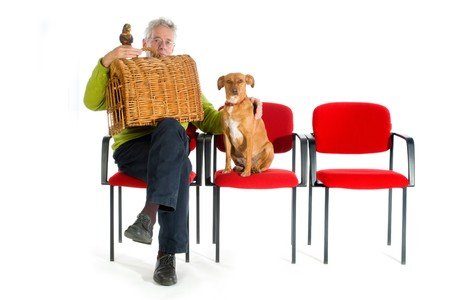
Just because your bird doesn’t need a vaccination, it makes no excuse that an annual vet visit should not be part of its care.
7 – Learn the warning signs that your bird may be sick and watch for them
Labored breathing is easy to detect because a bird’s chest normally does not move in and out like mammals who have a diaphragm. Popcorn our cockatiel had Ascites, fluid build up in her abdomen, which pressed against her air sacs (birds have 9) and lungs causing her to constantly pant.
If your bird’s feathers are constantly fluffed this could be a sign of anything from running a fever to that they are simply cold because that’s what birds do when they are cold.
Dull eyes, swollen eyes or discharge from the eyes is a signal of illness and must be attended to quickly.
If your bird’s wings are droopy your bird is sick and requires veterinary attention quickly.
If your bird hangs on the side of the cage with its beak for a long time instead of sitting on a perch, you got a problem.
If the feathers are matted and or dirty it is time to go to the vet.
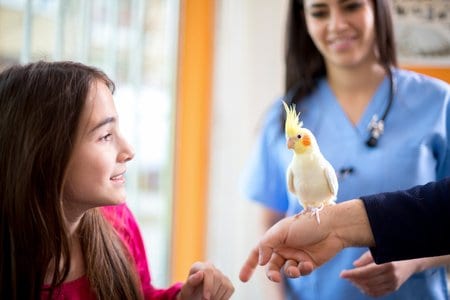
Cockatiels are known for night frights. They can fall off their perch flapping their wings uncontrollably causing a winged to get caught in cage bars or toys and break so you want to watch how your bird holds its wings. A night light is helpful.
Know how much your bird drinks on a regular basis. Popcorn our cockatiel never took more than three sips of water with her beak at a time. Peaches our Senegal parrot always dunks 6 to 7 times. If those numbers increase with your bird, it may be a sign of illness.
Limping can be caused by an overweight bird landing the wrong way. This happened to our cockatiel Popcorn. Her foot was in a cast for a couple weeks. She was overweight from the aforementioned Ascites.
You should also look for things that your bird is not doing like preening. If your bird isn’t preening something is wrong. If your bird sleeps too much or spends its day with its eyes closed it may be ill. So many people talk about their birds suddenly changing their behavior and beginning to lunge or starts to feather pluck. This would be a good time to make that Vet visit.
There are other symptoms that could indicate illness like seizures and collapse and nervous system signs that can be very serious.
The point is to know your bird(s) intimately because they will never communicate to you that they are sick other than by indicating through the symptoms mentioned above.
8 – Deploy full spectrum lighting over your bird’s cage.
Use a timer and set it for 12 hours of light and 12 hours of darkness while not respecting daylight savings time.
By not doing this you are damaging your bird’s circadian clock that tells the time of day more precisely than a Rolex.
Not providing regular light cycles can trigger behavioral issues like screaming and plucking.
Written by Mitch Rezman
Approved by Catherine Tobsing
Author Profile
Latest entries
 The Traveling BirdJune 26, 2025Can You Name 5 Parrot Species That Are Living Wild in the USA?
The Traveling BirdJune 26, 2025Can You Name 5 Parrot Species That Are Living Wild in the USA? Bird BehaviorJune 26, 2025How is it Parrots Are Problem Solvers Social Animals and Even Use Tools?
Bird BehaviorJune 26, 2025How is it Parrots Are Problem Solvers Social Animals and Even Use Tools? Bird & Parrot AnatomyJune 25, 2025How a Tiny Chemical Modification Makes Parrots Nature’s Living Paintings
Bird & Parrot AnatomyJune 25, 2025How a Tiny Chemical Modification Makes Parrots Nature’s Living Paintings PigeonsJune 20, 2025How Do Parrots Thrive in Cities Outside Their Native Habitats?
PigeonsJune 20, 2025How Do Parrots Thrive in Cities Outside Their Native Habitats?
This Post Has One Comment
Leave a Reply
You must be logged in to post a comment.
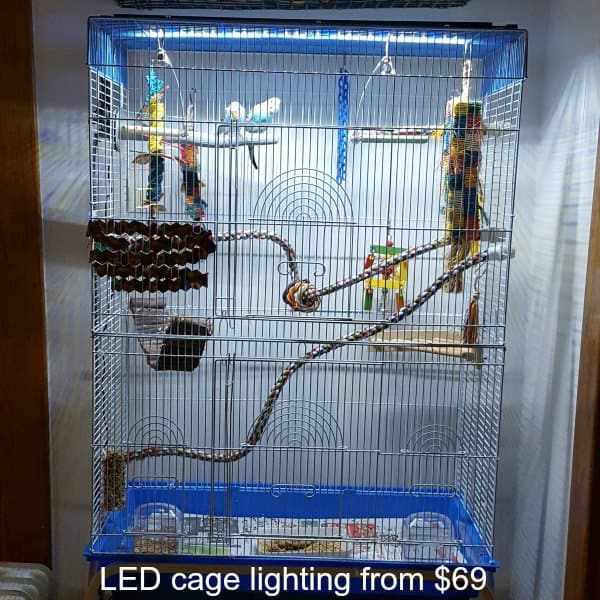



JewelsinMo
13 Feb 2017Could you provide examples of “cage scraping”? I am interested in the canopy you describe and what you would do on the bottom 1/3 of the cage for an African Gray. Thanks!